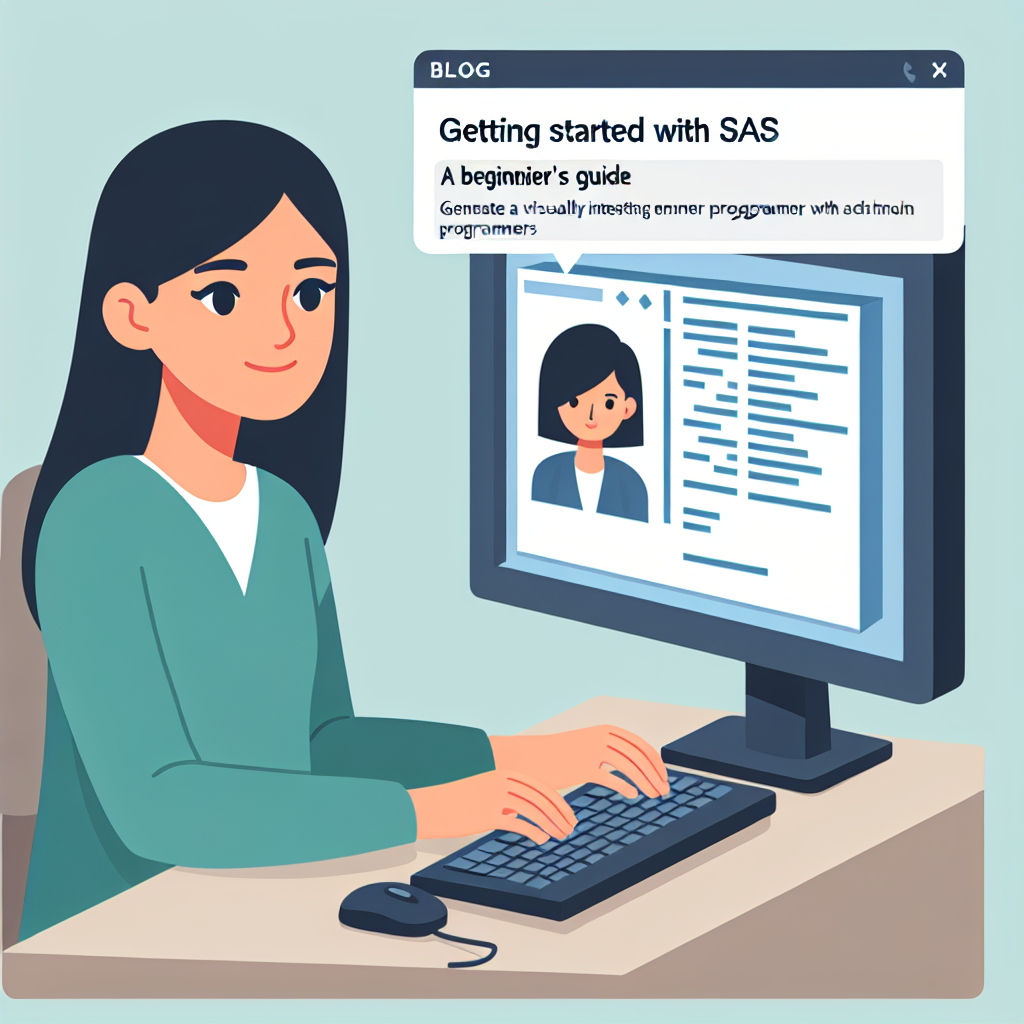Your cart is currently empty!
Getting Started with SAS: A Beginner’s Guide

SAS (Statistical Analysis System) is a powerful software suite used for advanced analytics, business intelligence, and data management. If you’re new to SAS and looking to get started, this beginner’s guide will help you understand the basics and get up and running with SAS.
First, you’ll need to install SAS on your computer. You can download a free trial version from the SAS website, or purchase a license for the full version. Once you have SAS installed, you can start exploring its features and functionalities.
One of the first things you’ll want to do is familiarize yourself with the SAS interface. The main components of the SAS interface include the Editor window, Log window, Output window, and Results window. The Editor window is where you can write and edit SAS code, while the Log window displays any error messages or warnings. The Output window shows the results of your SAS code, and the Results window displays any graphs or tables generated by your code.
To start using SAS, you’ll need to write SAS code. SAS code is written in a programming language called SAS programming language. You can use the Editor window to write and edit your SAS code. SAS code is made up of statements and procedures that tell SAS what actions to take on your data.
One of the most common tasks in SAS is importing and manipulating data. You can import data into SAS from a variety of sources, including Excel files, CSV files, and databases. Once you have imported your data, you can use SAS procedures to manipulate and analyze it. Some common SAS procedures include PROC PRINT, PROC MEANS, and PROC SQL.
Another important aspect of SAS is data visualization. SAS provides a variety of tools for creating graphs and charts to visualize your data. You can use the PROC GPLOT and PROC GCHART procedures to create different types of graphs, such as scatter plots, bar charts, and histograms.
As you continue to explore SAS, you’ll discover that it has a wide range of features and functionalities for data analysis and reporting. Whether you’re a beginner or an experienced data analyst, SAS can help you uncover insights and make informed decisions based on your data.
In conclusion, getting started with SAS may seem daunting at first, but with practice and perseverance, you’ll soon become comfortable using this powerful software suite. By familiarizing yourself with the SAS interface, writing SAS code, importing and manipulating data, and creating visualizations, you’ll be well on your way to mastering SAS and leveraging its capabilities for your data analysis needs.

Leave a Reply